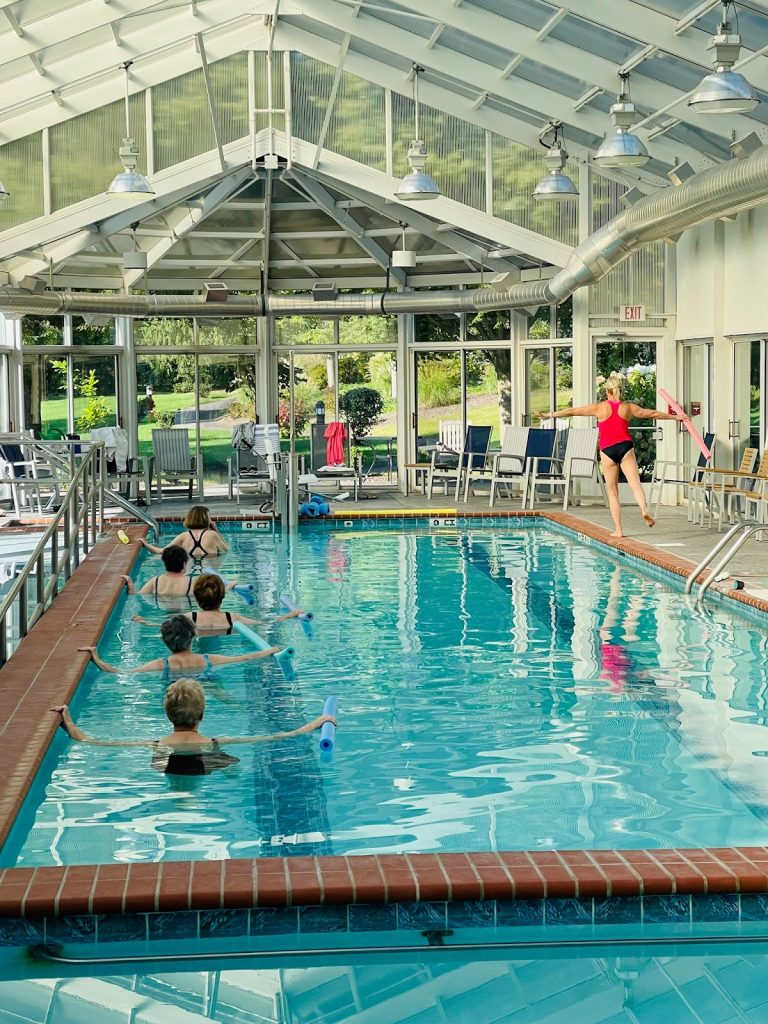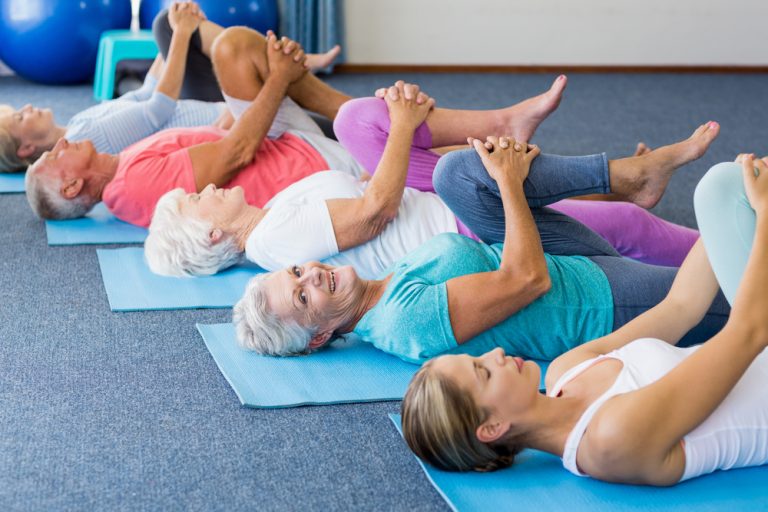
Can you spare 30 minutes a day to add more quality years to your life? Medical experts agree that seniors ages 65 and older can benefit greatly from engaging in 30 minutes of moderate aerobic exercise most days of the week. That can include brisk walking, but you can also explore additional safe, low-impact exercises to add variety and boost your well-being.
Need more proof? According to the World Health Organization (WHO), older adults who engage in regular physical activity have lower rates of coronary heart disease, stroke and Type 2 diabetes not to mention the fact that regular physical activity helps prevent falls, strengthen bones and joints, improve your strength, and increase cognitive function, among many other benefits.
Many of the exercises described here can be done at home and can be modified for any fitness level. If you live in a retirement community with a strong focus on wellness, such as Fellowship Village, or one of our other FellowshipLIFE communities, you have the advantage of instructors, equipment, a pool, and a fun way to raise your heart rate with like-minded friends.
One note: Before beginning any type of low-impact exercise program, please talk to your doctor. It’s important to do the right kind of exercise, especially for those with chronic conditions, and to choose 30-minute exercises that don’t aggravate conditions such as osteoarthritis or disc issues. Your bones and joints will thank you for it.
7 Low-Impact Exercises to Try Now
1. Walking (Indoors or Outside)
When it comes to working out, you can’t choose a much cheaper low-impact exercise than walking. A supportive pair of athletic shoes and comfy clothes is all it takes to get started. Walking at a nice steady pace not only helps strengthen your bones, joints and muscles, but it’s also great for heart health and circulation. It can even help you lose weight, tone up, and sleep more soundly. If weather dictates, walk indoors on a treadmill, in the mall, or on a track.
2. Swimming
Swimming is essentially a no-impact exercise, so it’s a wonderful full body workout option for seniors, especially if you suffer from joint pain. If lane swimming isn’t your thing, give water aerobics designed for older adults a try. It’s a terrific cardiorespiratory workout and also great for improving muscle strength and endurance. Several studies show pool time benefits mood, reduces anxiety, and improves cognitive health as well.
3. Yoga
Flexibility and balance are tops on most seniors’ wishlists. Improving these fitness factors is one of the best ways to maintain a healthy body. For these reasons, many seniors gravitate to yoga. It’s essentially a no-impact workout, so it’s easier on your joints. Try a few online or in-person classes to get comfortable with the moves, and then you can keep going and/or practice in the comfort of your own home.
4. Simple Stretching
A good stretch routine is great for keeping older muscles and joints flexible and can help reduce pain. Stretching can also improve and enhance your other workouts, from swimming to yoga to playing golf. Plan a personalized stretch routine with a physical therapist or fitness instructor. You can even add resistance bands for a more intense stretch and/or add light weights to add strength training to your routine. Stretching is something you can do daily and it’s worth it!
5. Water Aerobics
With water, you get to defy gravity, and that can help with pain and stiffness during a workout. Exercising in the water is surprisingly challenging and invigorating, combining cardio exercises with strength training for an ideal no- to low-impact fitness experience. The water provides just the right amount of resistance against leg and arm lifts, so it’s great for strengthening your muscles and avoiding the strain that floor exercise puts on knees, shoulders or lower back. And you don’t need to be a great swimmer to participate since most of the exercises take place in shallow waist- or chest-high water.
6. Cycling Indoor or Out
The circular motion you engage with any type of cycling is easy on your joints, and it’s also a good workout for strengthening hip and thigh muscles, not to mention boosting heart health and reducing stress. You have many options for cycling these days. Indoor stationary bikes, adult tricycles (they’re practically fall-proof!), traditional bikes, and motor-assisted bikes. Typically, fitness centers within retirement communities have several stationary bikes with computers to time out the perfect 30-minute exercise program. Also ask about cycling classes it’s fun to roll with a group!
7. Tai Chi
Don’t be intimidated by the exotic name tai chi is an easy-to-learn low-impact exercise requiring no special gear or clothing. Tai chi’s meditative flowing movements invoke calm, plus it’s excellent for improving your strength and flexibility. It’s a superb way to build up your balance as well, which can help reduce the risk of falls. Retirement communities (and community fitness centers) typically offer tai chi classes. You’ll want to take several sessions to learn the movements, but once you do, you can practice anywhere, anytime.
Wellness is #1 at FellowshipLIFE
At FellowshipLIFE, we promote wellness and well-being in all kinds of ways. After all, you’ve got a lot of living ahead of you! Learn about how you can enjoy a wealth of fitness and wellness options right outside your door, and then contact us. We’ll give you a tour and show you how terrific life can be, whether you live in one of our communities or remain at home as a Fellowship Freedom Plan member.




